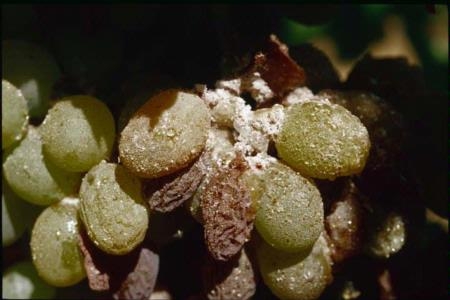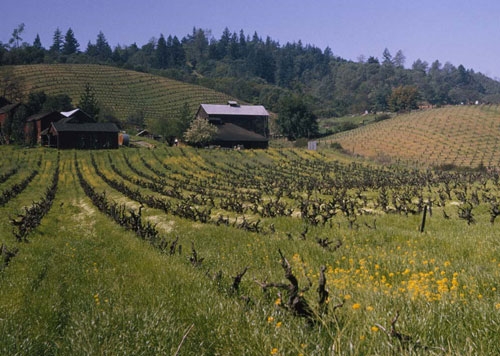Posts Tagged: Deborah Golino
UCCE teaching the next generation of farmers
Students accepted into a new farming and ranching education program being offered by UC Cooperative Extension in Sonoma County and other institutions will have their first of nine monthly meetings March 30, wrote Michael Shufro in the Santa Rosa Press Democrat.
“We recognize that the current population of farmers is aging, and that we need to get our younger farmers prepared and ranching,” said Stephanie Larson, UC Cooperative Extension advisor in Sonoma County and director of the new training program. “We’re really hoping to not only get more farmers and ranchers trained, but to increase food access and food production in Sonoma County, and also to teach more people about where their food comes from.”
Students in the program will split their time between classwork with ag teachers, field work with local farmers and business plan development with small business experts. The program will expand to include the broader farming community, connecting students with restaurants and grocers that buy local produce and the slew of farmers’ markets around the county.
“Programs like this strengthen the parts we already have and bring farmers together,” Larson said. “We used to work mainly in silos, but we’ve been breaking those silos down, and finding it works much better together than separately.”
Another blessing for Napa
Paul Franson, Napa Valley Register
On top of wine, food, arts and culture that some large cities might envy, Napa Valley has an invaluable, little-recognized asset: an uncommonly cooperative and educated wine industry.
Grape leafroll virus a headache for California farmers
Two relatively new variants of grape leafroll virus, known as V3 and V5, are alarming some winegrape growers in California's famed wine country, according to an article yesterday in the San Francisco Chronicle.
The virus is spread by grafting infected cuttings and by the feeding of vine mealybug. It won't kill the vineyard, but it will prevent normal sugar development and reduce yields.
The Chron article, written by Alice Feiring, said the late Ed Weber, Napa County's previous UC Cooperative Extension viticulture farm advisor, and Deborah Golino, director of Foundation Plant Services at UC Davis, in 2002 began a four-year study of the virus in an Oakville vineyard. During the study, there was a threefold increase in the number of infections in that vineyard alone.
UC Berkeley biological control specialist Kent Daane told the reporter that pesticides are not effective against vine mealybug because the bugs hide under leaves. A better control measure, Daane believes, is pheromone mating-disruption.
Nevertheless, Golino told the paper there will not be a fast fix. She encourages growers to purchase certified virus-free vines, "even when it means giving up field selections that have been a longtime part of a winemaking program."
The article also reported there is circumstantial evidence that shows vineyards managed organically might have natural predators for the vine mealybug.
"We don't see the problem in our organic vineyards as we do in our conventional," a farmer was quoted in the story. "But I'm not prepared to say that's the reason."

Vine mealybug feeding destroys grape clusters and spreads viruses.
Is *suitcase smuggling* to blame for new pest?
A few of California's top vintners admit to having smuggled grapevine cane cuttings into the United States to avoid a long wait for the plant to be cleared by USDA, according to an article that moved on the Associated Press wire over the weekend. The article was published in the Fresno Bee, the New York Times and other media outlets.
Some are wondering if what reporter Tracie Cone wrote is a "winked-at act of sneaking in vines" from Europe may have also imported the European grapevine moth, an Italian pest now threatening Napa vineyards.
The deputy agricultural commissioner for Napa County, Greg Clark, expressed his frustration with the practice of suitcase smuggling.
"There are people who continue to spin their tales of smuggled plant material," Clark was quoted. "People like a story with a glass of wine, and what that tends to do is legitimize behavior that not only threatens the industry, it's illegal. Knock it off."
Director of the UC Davis Foundation Plant Services, Deborah Golino, said some of the plant virus problems in Napa may also result from smuggling.
"The more we move plants around the world, the more chance there is of introducing problems," Golino was quoted.
Other theories about how the pest came to California are swirling around, the story said. In addition to the smuggled grapevine rumors, talk has centered around imported vineyard machinery or even deliberate introduction. Since the first detection of the pest was no where near a seaport, ag officials believe it unlikely the pest was transported on a container ship.
But UC Cooperative Extension viticulture farm advisor Monica Cooper said the moth's life cycle wouldn't be conducive to suitcase smuggling.
"I'm not saying that people don't still try to get suitcase wood in, but in this instance, I'm not sure the pest would be transported like that," Cooper was quoted.
More information and photos of the European grapevine moth are available on the UC Integrated Pest Management Web site.

European grapevine moth larva feeding on berries. (Photo: M. Cooper )


